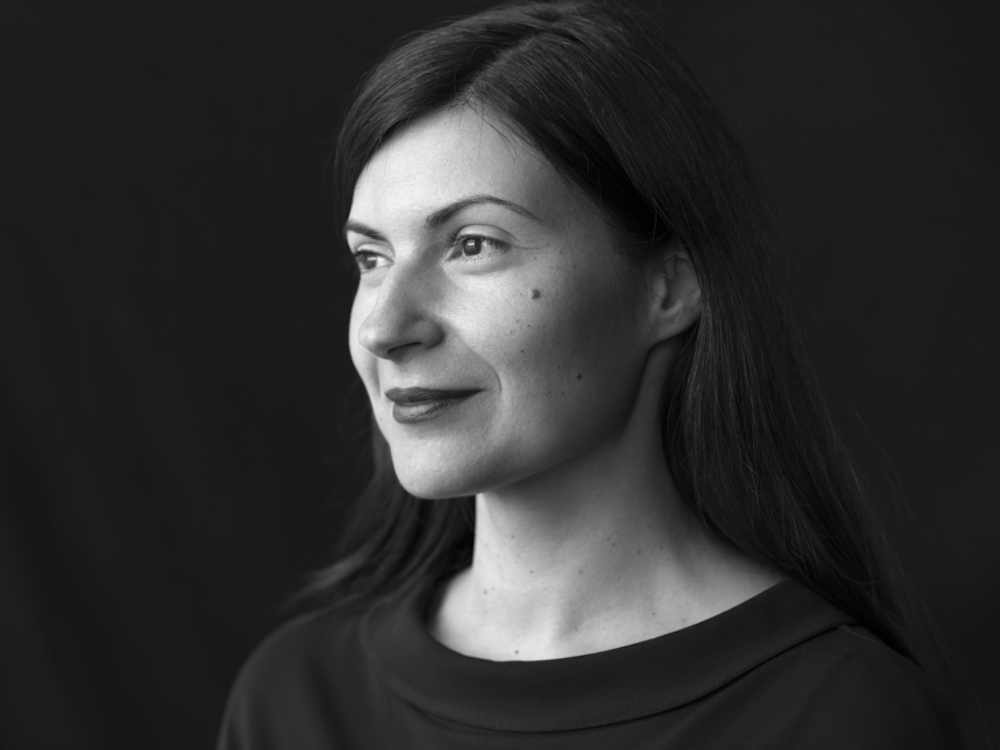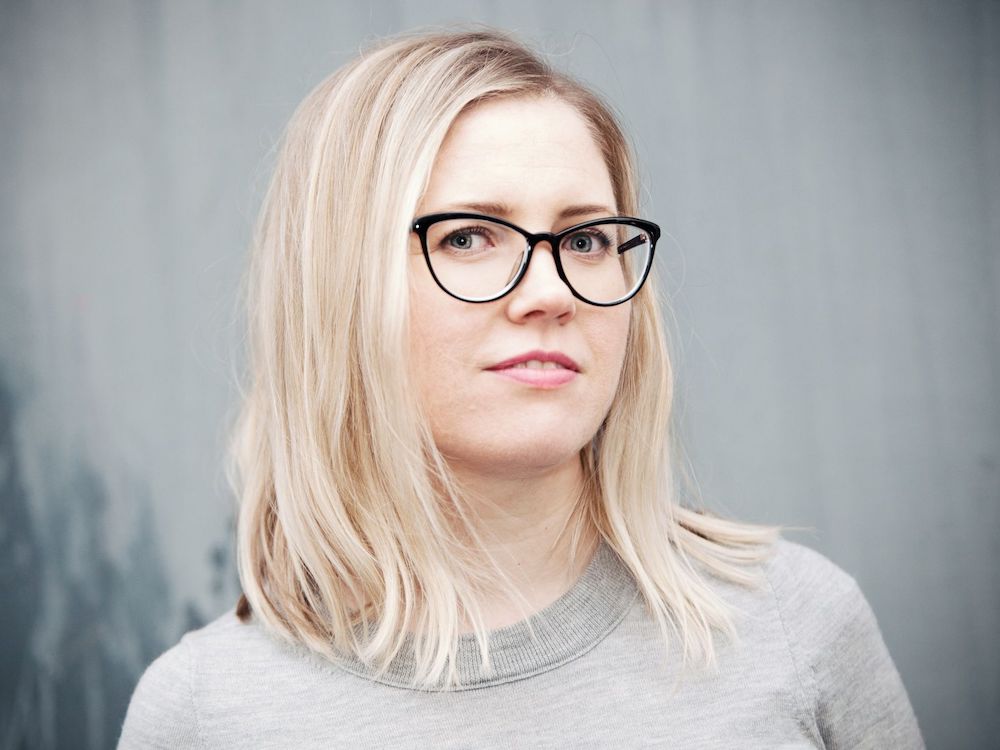【Historical Archives】
Staff Picks: Bunnies,Historical Archives Berries, and Baffling Omissions
This Week’s Reading

Mona Awad. Photo: Brigitte Lacombe.
Mona Awad’s prose is dangerous. She crafts beautiful meals laced with poison; her new novel Bunnyis a satirical glimpse into elite education that transforms a college into the deep, dark woods of a fairy tale. Set on the ivy-covered campus of Warren University, a monied institution gleaming at the heart of a poverty-stricken, crime-ridden city, Bunnyfollows the M.F.A. candidate Samantha Heather Mackey as she becomes entwined with four fellow writing students, a glittering, eerie group of women who call one another “Bunny.” The Bunnies lure Samantha into their mysterious Workshop, where “kill your darlings” is a literal practice, the creative process a twee but twisted game of playing god(dess). Awad’s words have shadows to them, dual meanings that she flexes in her surreal descriptions of the university’s faculty and in the academic jargon the Bunnies employ to justify their desires. And though Bunnyis steeped in strange magic, real forces lurk throughout the novel, lying just past the confines of campus: poverty, gentrification, mental illness. The Bunnies’ creativity is equally driven by magic as it is by class; they “inherited it, like our summer houses, our grand pianos, our perfect, nuanced taste.” Awad captures the allure of these tastemakers, the desire to be part of a we, and the insidiousness that comes with power, a “necklace gleaming in the tall grass that could be a snake.” —Nikki Shaner-Bradford
In the recent surge of fiction written by millennial women for their peers, none have done quite what Molly Dektar does in her debut novel, The Ash Family. Briefly summed, The Ash Familyis about a young woman who runs away after high school to join a cult. This story line may ring with a familiar tenor, but that is quickly quieted by the presence of something fresh we will undoubtedly see more of soon, both in fiction and life: the anxiety of ecological collapse and the radicalization of those who feel it. The “millennial novel,” as it has developed into a subgenre thus far, is in large part about individuation and actualization, but here it is about trying to connect in some meaningful way with the physical world. The protagonist, Berie, is never fully involved in her new family’s increasingly violent acts, and this is likely because Dektar’s attention is as captivated by the natural world as Berie’s is; she would rather linger over landscapes than plot a protest. And thankfully so—Dektar crafts beautiful prose, lush and loamy in the vein of Thomas Hardy’s naturalism. Even when characters from Berie’s old life come to try and take her away, she is far more panicked at leaving the “essential” life she lives in the wild than she is at the thought of leaving the community. Dektar has a way of seeing—the world, the people in it—that makes me excited for whatever she does next. —Lauren Kane

Karen Havelin. Photo: Anna-Julia Granberg, Blunderbuss.
After a dear friend of mine was diagnosed with endometriosis earlier this year, I found myself idly googling the condition one evening, looking for some kind of book or artwork to recommend her—something to distract her, something to alleviate the endless waiting that now seemed to constitute large swaths of her days. My search eventually led me to Please Read This Leaflet Carefully, the Norwegian writer Karen Havelin’s debut novel, published in the U.S. this spring by Dottir Press. It follows Laura, a thirty-six-year-old Norwegian woman in New York, as she moves through her journey with severe endometriosis and into the shadowy, parallel universe that is our contemporary understanding of female pain and its accompanying treatments. By turns angry, consoling, and despondent, the book is a clear-eyed exploration of how women’s health issues are rarely taken seriously. Another plus: its interesting use of time. Rather than moving forward through the narrative, Havelin has her character moving backward, with each chapter taking place at a younger and younger age, until Laura is a teenager again and at the beginning of this health journey. It’s a clever unspooling of one woman’s psyche—I hope my friend enjoys her copy. —Rhian Sasseen
Ayelet Waldman is perhaps best known in literary circles as the author of two brilliant (and fun) nonfiction books, one about motherhood and another about microdosing LSD. But it’s her novels that I love best. Her fiction possesses a narrative velocity that pulls the reader along, relaxing in moments of emotional resonance and then whipping us forward once more. Her 2014 novel, Love and Treasure, was largely missed on the various “best of” lists that year—a strange and, for me, baffling omission. The novel tells the interwoven story of Jewish and European refugees in the wake of the Holocaust, using purloined art as its fulcrum. But the book is also a window into history—both emotional and political—dipping into the creation of Israel, the impossible and irreconcilable guilt of survivors, and the ways in which subsequent generations can (and do) take up the cause of their parents and grandparents. This is the work of a novelist at the height of her powers, a balancing act between matters of the heart, of politics, of war, and of history—and it kept me deeply engrossed to the final glorious page. —Christian Kiefer
I’ve been thinking about Terese Marie Mailhot’s memoir, Heart Berries, every day since I finished it. The slim book is her telling of a childhood scarred by poverty, addiction, and abuse on the Seabird Island Band in British Columbia. Mailhot began working on the book after having herself committed following a breakdown. “Pain expanded my heart,” she says, and she generously lets us in to the chaos of her past. She reckons with intergenerational trauma—a terrifying father, an absent mother, foster care—and her own subsequent relationships: a failed marriage, a son, a messy affair, her husband Casey. Her words are vulnerable and angry, self-deprecating and unsparing. “Isaiah cried all night,” she writes of her son, “and I remembered well that I held a hand over his mouth, long enough for me to know I am a horror to my baby.” But there’s also a tenderness, a startling keenness. “Nothing is too ugly for this world,” she writes. “It’s just that people pretend not to see.” And then: “You think weakness is a problem. I want to be torn apart by everything.” Mailhot moves nimbly between extreme feelings and time periods, reshaping the memoir into an artistic, energetic form. By the end, we feel her ambition and her triumphs. “I wanted as much of the world as I could take,” she writes. “And I didn’t have the conscience to be ashamed.” I’ve carried her unapologetic confessions with me. —Camille Jacobson

Terese Marie Mailhot. Photo: Beowulf Sheehan.
Search
Categories
Latest Posts
9 Tech Products That Were Too Early to Market
2025-06-27 01:41Offsides, Part 2 by David Gendelman
2025-06-27 01:33What to Read on a Stormy Weekend by Sadie Stein
2025-06-27 01:30Seceding: A Conversation with Liz Deschenes by Lauren O'Neill
2025-06-27 00:26HP Touchscreen Laptop deal: Get $240 off at Best Buy
2025-06-26 23:55Popular Posts
Clean energy projects soared in 2016 as solar and wind got cheaper
2025-06-27 01:41Chatterley Sex Advice, and Other News by Sadie Stein
2025-06-27 01:34Getting Caught by Drew Bratcher
2025-06-27 01:06The Man in Black, and Other News by Sadie Stein
2025-06-27 00:23Featured Posts
E3 2017 Trailer Roundup: Upcoming PC Games
2025-06-27 01:30What We’re Loving: Ham Biscuits, Victoriana by Sadie Stein
2025-06-27 00:50Consequently, I Rejoice by Sadie Stein
2025-06-27 00:15Parsing Middle Earth Contract, and Other News by Sadie Stein
2025-06-26 23:56Popular Articles
Best iPad deal: Save $70 on 10th Gen Apple iPad
2025-06-27 01:55The Hollywood Subway: Against the Horizontal City by Aaron Gilbreath
2025-06-26 23:35Google's data center raises the stakes in this state's 'water wars'
2025-06-26 23:19Newsletter
Subscribe to our newsletter for the latest updates.
Comments (75565)
Warmth Information Network
The Best CPU & GPU Purchases of 2017
2025-06-27 01:57Information Information Network
Letter from Berlin: In the Cut by Zeke Turner
2025-06-27 01:56Style Information Network
Gertrude Stein, Monster Hunter, and Other News by Sadie Stein
2025-06-27 01:23Wisdom Information Network
Cake and Pie, and Other News by Sadie Stein
2025-06-27 01:09Unobstructed Information Network
Blockchain Explained: How It Works, Who Cares and What Its Future May Hold
2025-06-26 23:28